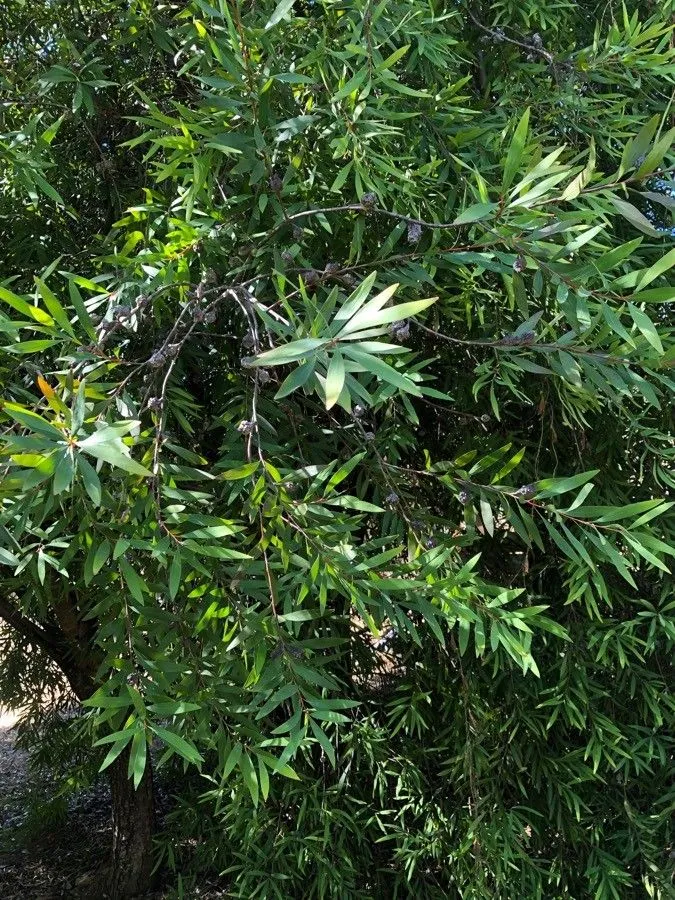
Author: B.L.Burtt (Vent.)
Bibliography: Bull. Misc. Inform. Kew 1941:33. 1941
Year: 1941
Status: accepted
Rank: species
Genus: Hakea
Vegetable: False
Observations: E. Australia
Finger hakea, scientifically known as Hakea salicifolia, is an intriguing plant species native to Eastern Australia. This member of the Proteaceae family stands out with its distinctive botanical features and adaptability to varying environmental conditions.
First documented in the “Bulletin of Miscellaneous Information Kew” in 1941 by B.L. Burtt, Hakea salicifolia has since garnered considerable attention for both its aesthetic appeal and ecological importance. The common name, “finger hakea”, aptly describes the plant’s linear and elongated leaves that resemble fingers. These leaves are typically narrow, measuring between 7 to 15 centimeters in length and around 1 centimeter in width, showcasing a glossy green surface that enhances its visual allure.
The finger hakea is not only recognized for its foliage but also for its intricate flowering structure. Blooming primarily in late winter to early spring, the plant produces clusters of small, creamy-white flowers. These blooms emit a subtle yet pleasant fragrance, making them particularly attractive to various pollinators, including bees and birds. The flowers subsequently give way to woody, seed-bearing follicles that open to release seeds when mature.
Adapted to the diverse climates of Eastern Australia, Hakea salicifolia thrives in both coastal environments and upland areas. The species is remarkably resilient, capable of withstanding drought conditions as well as mild frost. This hardiness makes it a popular choice for gardeners and landscapers looking for a robust yet visually appealing plant to incorporate into their designs.
Furthermore, the finger hakea plays a vital ecological role in its native habitat. It contributes to soil stabilization and provides shelter and food for native wildlife. Gardeners value Hakea salicifolia for its low maintenance requirements and its ability to serve as an effective hedge or screen plant due to its dense foliage.
In summary, Hakea salicifolia, or finger hakea, is a noteworthy plant with a rich botanical heritage and significant ecological value. Its adaptability, attractive foliage, and fragrant flowers make it a favored choice in both natural and cultivated settings. The species continues to be celebrated for its beauty and resilience, remaining an integral component of Australia’s diverse flora.
Eng: finger hakea, willow hakea, willow-leaf hakea
Por: háquea-folhas-de-salgueiro
Afr: wilgerhakea
En: Finger hakea, Willow hakea, Willow-leaf hakea
Af: Wilgerhakea
Pt: Háquea-folhas-de-salgueiro
Taken Jun 23, 2022 by James Mwago (cc-by-sa)
Taken Dec 10, 2021 by al (cc-by-sa)
Taken Sep 19, 2020 by Mary Graham (cc-by-sa)
Taken Apr 6, 2022 by Brito Francisco (cc-by-sa)
Taken Feb 5, 2022 by Kozie WithA-K (cc-by-sa)
Taken Oct 5, 2019 by Daniel Grixti-Cheng (cc-by-sa)
Taken Apr 30, 2021 by Eli (cc-by-sa)
Taken Oct 15, 2020 by mario peters (cc-by-sa)
Taken Mar 8, 2022 by lazarino flavio (cc-by-sa)
Taken Feb 5, 2022 by Kozie WithA-K (cc-by-sa)
Taken Oct 5, 2019 by Daniel Grixti-Cheng (cc-by-sa)
Taken Aug 2, 2020 by Oooooo Jan (cc-by-sa)
Taken Apr 19, 2014 by Tela Botanica − Danièle DOMEYNE (cc-by-sa)
Taken Oct 9, 2020 by deborah walton (cc-by-sa)
Taken Sep 14, 2021 by Mike Fawcett (cc-by-sa)
Taken Oct 15, 2020 by mario peters (cc-by-sa)
Taken Mar 8, 2022 by lazarino flavio (cc-by-sa)
Growth habit>: Tree
Family: Myrtaceae Author: (F.Muell.) K.D.Hill & L.A.S.Johnson Bibliography: Telopea 6: 402 (1995) Year: 1995 Status:…
Family: Rubiaceae Author: Pierre ex A.Froehner Bibliography: Notizbl. Bot. Gart. Berlin-Dahlem 1: 237 (1897) Year:…
Family: Sapindaceae Author: Koidz. Bibliography: J. Coll. Sci. Imp. Univ. Tokyo 32(1): 38 (1911) Year:…
Family: Asteraceae Author: A.Gray Bibliography: Pacif. Railr. Rep.: 107 (1857) Year: 1857 Status: accepted Rank:…
Family: Fabaceae Author: Medik. Bibliography: Vorles. Churpfälz. Phys.-Ökon. Ges. 2: 398 (1787) Year: 1787 Status:…
Family: Aspleniaceae Author: (Cav.) Alston Bibliography: Bull. Misc. Inform. Kew 1932: 309 (1932) Year: 1932…